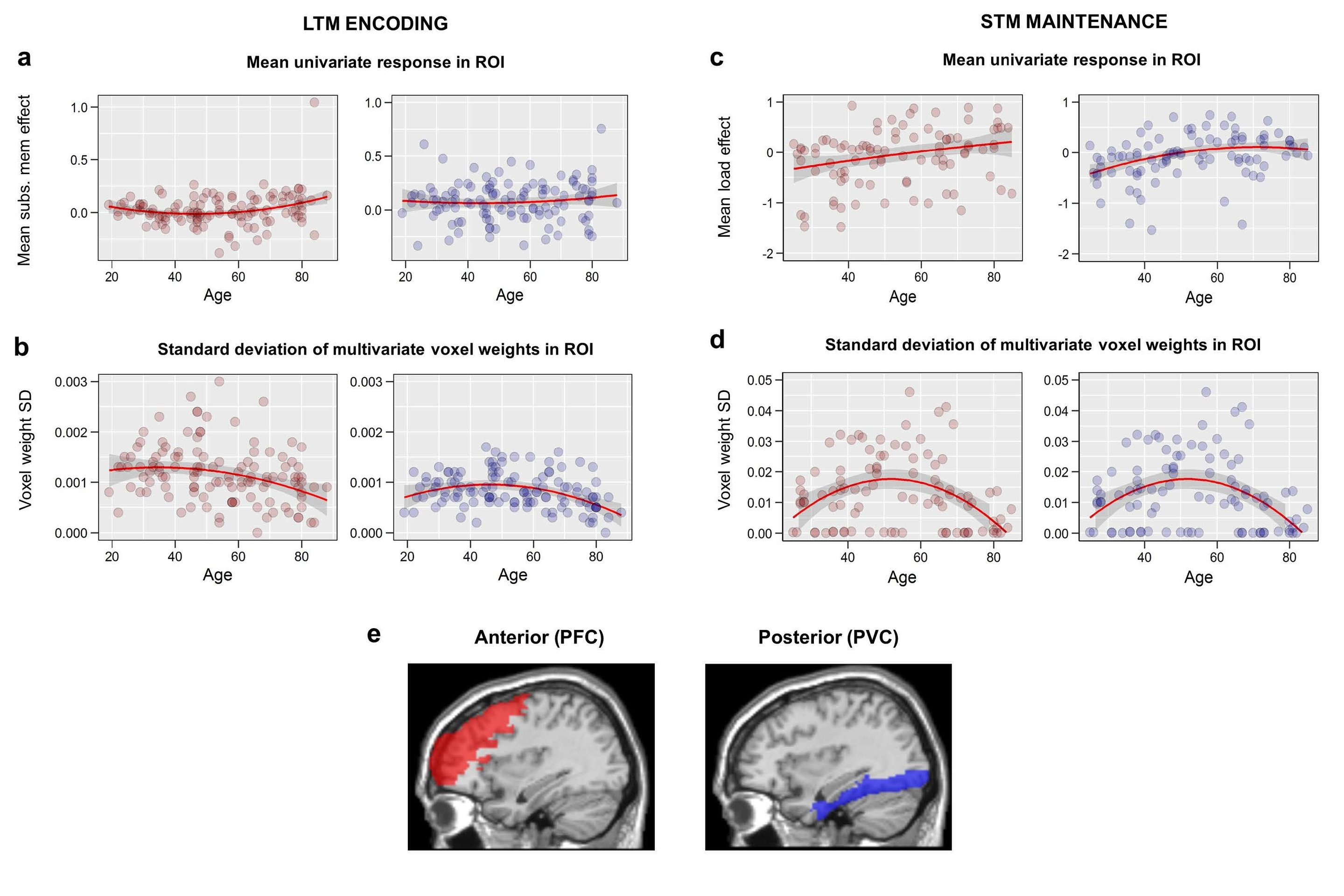The Impact Of Brain Iron On ADHD And Cognitive Decline With Age

Table of Contents
The Role of Iron in Brain Function
Iron is an essential element for optimal brain function, playing a vital role in several key processes. Its presence is critical for neurotransmission, the process by which nerve cells communicate with each other, enabling proper brain activity. Iron is also integral to oxygen transport, ensuring that brain cells receive the oxygen they need for energy production. Furthermore, iron is crucial for brain energy metabolism, powering the complex biochemical reactions necessary for cognitive processes.
The brain utilizes different forms of iron, each with distinct functions. Heme iron, found within hemoglobin and myoglobin, facilitates oxygen transport. Non-heme iron, on the other hand, participates in various enzymatic reactions. Maintaining a precise balance between these forms is crucial for healthy brain function.
- Iron's crucial role in myelin production: Myelin is the protective sheath around nerve fibers, vital for efficient signal transmission. Iron deficiency can impair myelin production, leading to slower neural processing.
- Iron's involvement in dopamine synthesis: Dopamine, a neurotransmitter associated with motivation, reward, and attention, requires iron for its synthesis. Imbalances in brain iron can disrupt dopamine production, potentially contributing to ADHD symptoms.
- Iron's impact on neuroinflammation: Excessive iron can contribute to oxidative stress and neuroinflammation, damaging brain cells and contributing to cognitive decline.
Brain Iron and ADHD
Emerging evidence suggests a strong link between iron dysregulation and ADHD symptoms. Studies have shown altered iron levels in specific brain regions of individuals with ADHD. This dysregulation might manifest as either iron overload or deficiency, both potentially impacting brain function.
Several potential mechanisms link iron imbalance to ADHD:
-
Iron overload in specific brain regions: Excessive iron accumulation in certain brain areas may disrupt neural signaling and contribute to attention deficits and hyperactivity.
-
Impaired iron transport: Deficiencies in proteins responsible for transporting iron within the brain can lead to iron depletion in crucial areas, hindering neurotransmitter synthesis and cognitive function.
-
Studies showing altered iron levels in ADHD patients: Several research papers have reported significantly different iron levels in the blood and cerebrospinal fluid of individuals diagnosed with ADHD compared to neurotypical controls.
-
Potential links between iron deficiency and ADHD symptoms (inattention, hyperactivity): Iron deficiency anemia, while not directly causing ADHD, may exacerbate existing symptoms due to its impact on brain function.
-
Discussion of potential therapeutic interventions targeting iron levels in ADHD: While still under investigation, targeted iron supplementation or chelation therapies may prove beneficial in managing ADHD symptoms in specific cases, particularly those involving iron deficiency.
Brain Iron and Age-Related Cognitive Decline
Iron homeostasis, the process of maintaining iron balance, undergoes significant changes with age. As we age, the brain's ability to regulate iron effectively declines, leading to a gradual accumulation of iron in certain brain regions. This accumulation, particularly in the form of neuromelanin, a dark pigment containing iron, is strongly associated with the development of neurodegenerative diseases like Alzheimer's and Parkinson's disease.
- The role of oxidative stress and iron in neuronal damage: Excess iron promotes oxidative stress, a process that damages brain cells and contributes to cognitive decline.
- The association between iron deposits and cognitive decline markers: Studies have shown a correlation between the accumulation of iron deposits in specific brain regions and markers of cognitive impairment.
- Potential benefits of iron chelation therapy in preventing or slowing cognitive decline: Iron chelation therapy, aimed at removing excess iron from the body, is being investigated as a potential preventative or therapeutic strategy for slowing cognitive decline in at-risk individuals.
Diagnosing and Managing Iron Imbalances
Assessing brain iron levels requires a multidisciplinary approach involving neurologists, psychiatrists, and other specialists. Methods for evaluating iron status include:
- MRI (Magnetic Resonance Imaging): Advanced MRI techniques can provide detailed images of iron distribution within the brain.
- Blood tests: Blood tests can measure serum ferritin levels, an indicator of total body iron stores. However, these tests may not fully reflect brain iron levels.
Treatment strategies for iron imbalances vary depending on whether the individual exhibits iron overload or deficiency:
-
Iron chelation therapy: This therapy helps remove excess iron from the body and is used to treat conditions like hemochromatosis. However, it carries potential risks and should be carefully managed.
-
Iron supplementation: For individuals with iron deficiency, supplementation may be recommended under medical supervision.
-
Lifestyle modifications: A healthy diet rich in iron-rich foods (lean meats, leafy greens) and regular exercise can support healthy iron levels.
-
Importance of a multidisciplinary approach involving neurologists, psychiatrists, and other specialists: Effective management of iron imbalances related to ADHD or cognitive decline often requires a collaborative effort from multiple medical professionals.
-
Risks and benefits of iron chelation therapy: While potentially beneficial in reducing iron overload, chelation therapy can have side effects, requiring careful monitoring and management.
-
Lifestyle modifications (diet, exercise) to support healthy iron levels: A balanced diet and regular physical activity play a crucial role in maintaining healthy iron levels and overall brain health.
Conclusion
This article highlights the significant impact of brain iron on both ADHD and age-related cognitive decline. The complex interplay between iron homeostasis, neurotransmission, and cognitive function underscores the need for further research to fully understand the underlying mechanisms. More research is crucial to develop targeted therapies that can effectively address iron imbalances and improve outcomes for individuals affected by ADHD and cognitive decline.
Understanding your brain iron levels is crucial for managing ADHD and preventing cognitive decline. Consult your doctor today to discuss your concerns regarding brain iron and its potential impact on your health. Further reading on topics such as brain iron regulation, ADHD treatment, and cognitive decline prevention is encouraged to gain a deeper understanding of this complex area.

Featured Posts
-
 Open Thread February 16 2025 Discussion
Apr 29, 2025
Open Thread February 16 2025 Discussion
Apr 29, 2025 -
 Legendas F1 Motor Uj Eletet Kapott Egy Porsche Ban
Apr 29, 2025
Legendas F1 Motor Uj Eletet Kapott Egy Porsche Ban
Apr 29, 2025 -
 British Paralympian Vanishes In Las Vegas Police Seek Information
Apr 29, 2025
British Paralympian Vanishes In Las Vegas Police Seek Information
Apr 29, 2025 -
 Nyt Wichita Black Hawk Crash Pilot Error In Final Turn
Apr 29, 2025
Nyt Wichita Black Hawk Crash Pilot Error In Final Turn
Apr 29, 2025 -
 Czy Porsche Cayenne Gts Coupe To Idealny Suv Test I Opinia
Apr 29, 2025
Czy Porsche Cayenne Gts Coupe To Idealny Suv Test I Opinia
Apr 29, 2025
Latest Posts
-
 The Most Emotional Rocky Movie According To Sylvester Stallone
May 12, 2025
The Most Emotional Rocky Movie According To Sylvester Stallone
May 12, 2025 -
 Which Rocky Movie Touches Sylvester Stallone The Most
May 12, 2025
Which Rocky Movie Touches Sylvester Stallone The Most
May 12, 2025 -
 Stallone Reveals His Top Rocky Movie A Touching Choice
May 12, 2025
Stallone Reveals His Top Rocky Movie A Touching Choice
May 12, 2025 -
 Sylvester Stallone Picks His Most Emotional Rocky Film
May 12, 2025
Sylvester Stallone Picks His Most Emotional Rocky Film
May 12, 2025 -
 Sylvester Stallones Favorite Rocky Movie The Franchises Most Emotional Entry
May 12, 2025
Sylvester Stallones Favorite Rocky Movie The Franchises Most Emotional Entry
May 12, 2025
